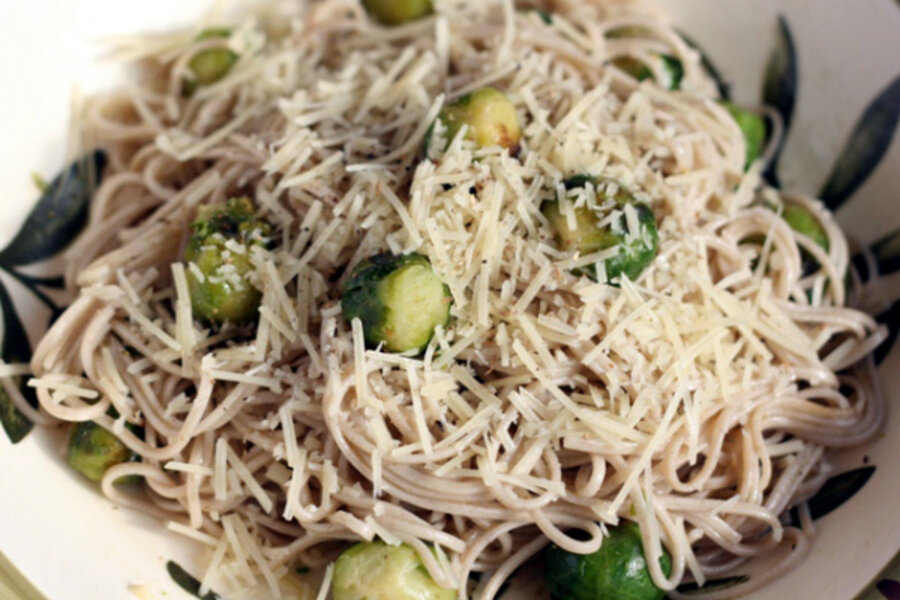By Patricia Tanumihardja, The Asian Grandmothers Cookbook
Soba with Parmesan and Pan Fried Brussels Sprouts
Adapted from "Melt: The Art of Macaroni and Cheese by Stephanie Stiavetti and Garrett McCord"
The original recipe uses fresh brussels sprouts but I had frozen ones in the freezer and this added to the brevity of cooking time. If you do use fresh, be sure to remove the stems and outer leaves. Halve them and blanche them for quicker cooking, too. Wholewheat spaghetti would be an excellent substitute for the soba.
Makes: 2 entree servings
Time: 15 minutes
8 ounces frozen petite Brussels sprouts (about 20)
2 bundles soba (about 6-8 ounces)
2 tablespoons olive oil
Fine sea salt
Coarsely ground black pepper
Chili flakes (optional)
2 garlic cloves, minced
Finely grated Parmesan
1. Thaw/cook the Brussels sprouts in the microwave on high for about 4 minutes. Drain excess water.
2. Meanwhile, prepare the soba per the manufacturer’s instructions. Once they are cooked, immediately drain and rinse under cool water for a moment, drain again, and then toss with 1 tablespoon of olive oil. Do this regardless of what the noodle instructions say at that point, as some may instruct you not to add oil. Set aside.
3. Place the remaining tablespoon of olive oil in a skillet over medium-high heat. When the oil is hot and shimmering, add the Brussels sprouts. Season with salt, pepper, and chili flakes. Cook, stirring occasionally, until the sprouts start to turn golden brown, about 4 to 5 minutes. Add the garlic and cook until fragrant, about 30 seconds.
4. Toss the soba in the hot pan for about 30 seconds. Remove from the heat and add an extra glug of oil, if you desire. Plate and shower liberally with Parmesan. Serve immediately.








